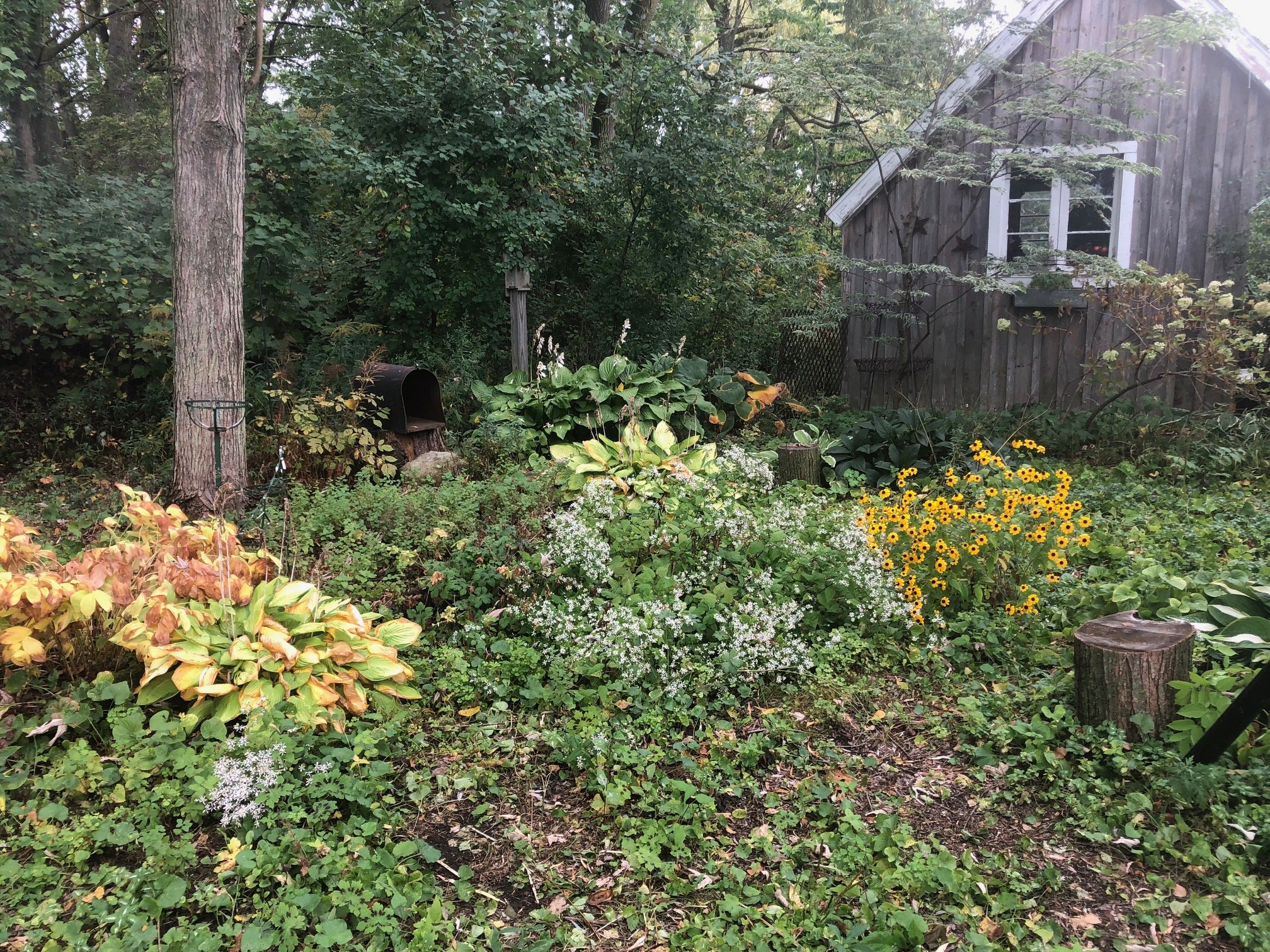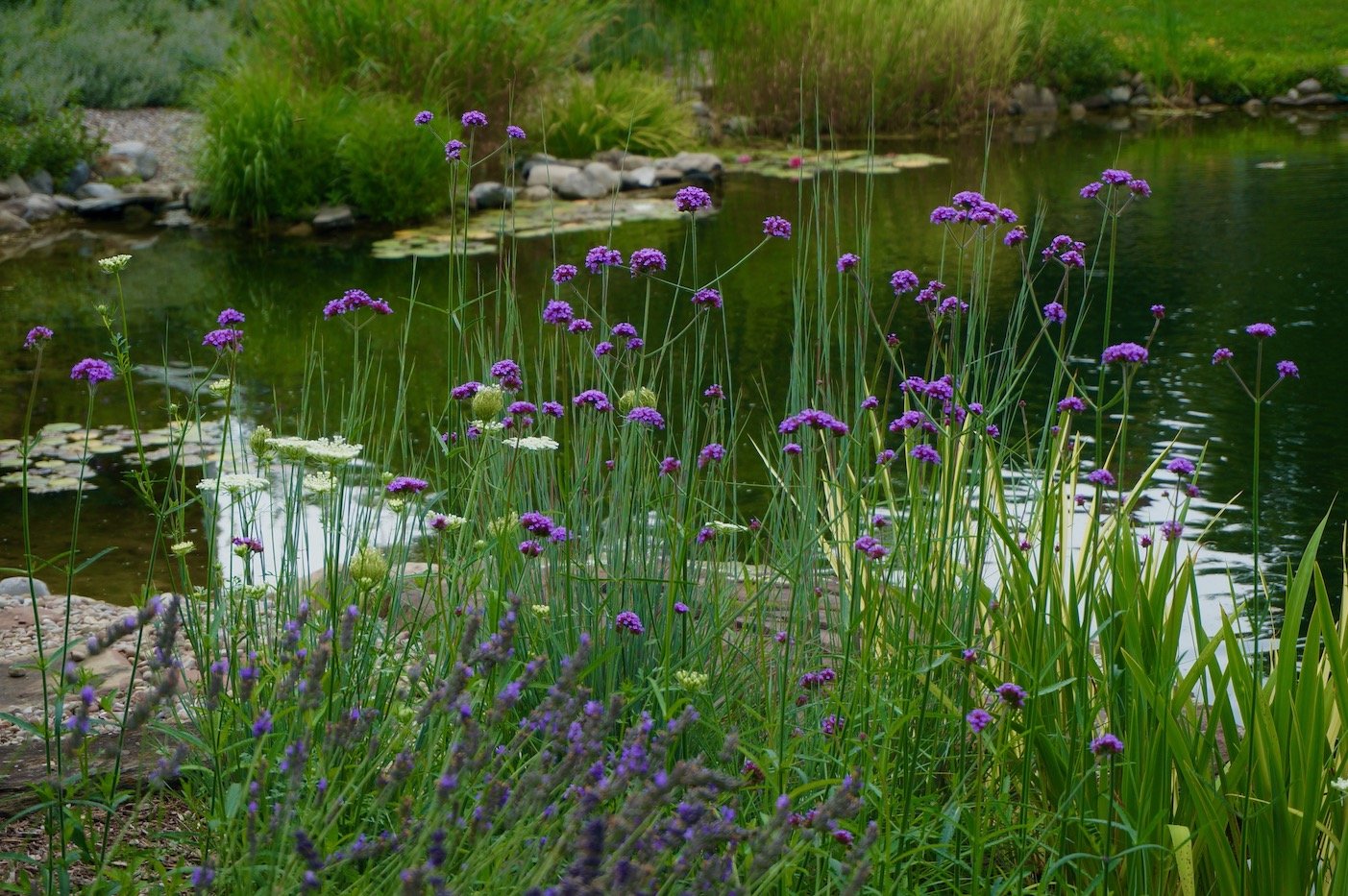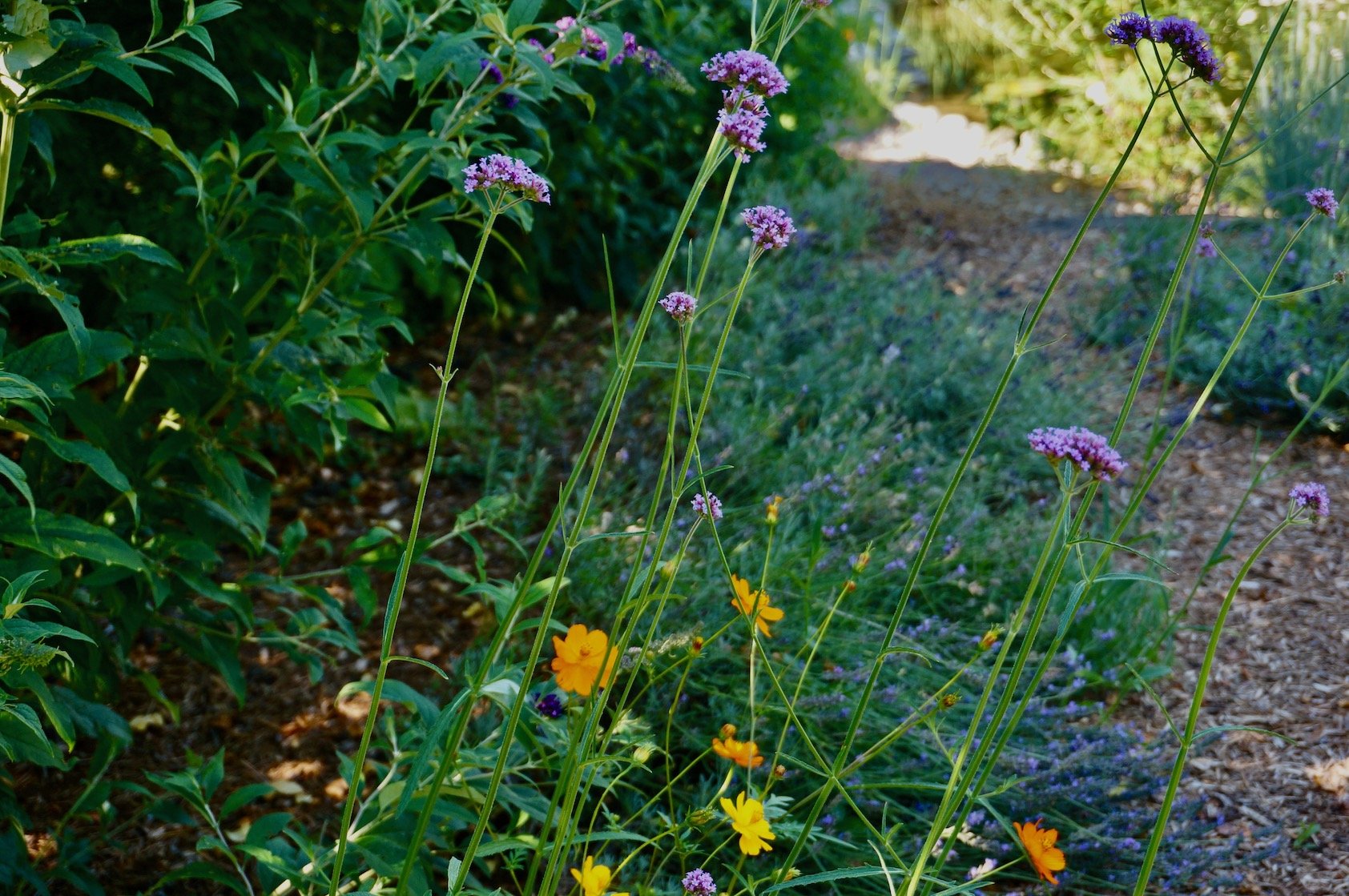Want to loosen up your garden style? Add self seeding and spreading plants to the mix
Since visiting gardens in England back in May, I’ve been obsessed with the art of letting it flow. One thing I noticed in every garden I visited was the abundance of self-seeding and spreading plants melded together in a seamlessly exuberant fashion. While I recognize that we don’t have the same varieties of plants here, l admire the concept of a looser garden style and have been thinking about how to reproduce it with the types of plants that we can grow. Plus, I think it makes sense to garden in a more practical, attractive and ecologically beneficial way.
I know, I know! Depending on the variety and where they pop up, self-seeding and spreading perennials can be a gift or a menace. Putting them in the garden is kind of a balancing act that requires management. Thoughtful attention to growth habits and cultural needs are imperative. So is deciding how you’re going to use them and figuring out what suits your garden best.
To avoid excessive rambling, I've organized the types of plants I'm referring to into specific categories. Let's delve into each one to explore the possibilities and challenges associated with incorporating these plants into the garden.
Rampant self seeders: Here’s one I’ve made friends with. I never planted Matricaria (Tanacetum parthenium) aka Feverfew - it just showed up. The down side of this plant is that it spills seeds at an alarming rate and would gobble up the entire garden if left untended. In its defense, the flowers are pretty and you can cut it way back or easily pull it out when it’s done.
A floriferous perennial, it is full of surprises. This summer, an entire row of them emerged in front of the hedge on the corner of my property. This is a spot that I generally ignore, thus it’s usually weed-ridden. Imagine my delight when I cruised down my street at the end of a long day and saw this outrageous display of flowers at the stop sign. It stopped traffic - literally. I have no idea why it only seeded itself on the right side, but I plan to encourage it further.
Plants don’t necessarily reseed the same way in every garden. It’s worth noting that I tried to grow this perennial in my Connecticut garden and failed miserably. The soil conditions were similar, (poor and somewhat dry) although the zone was similar - 4-5. I advise doing a little research on anything you already have growing and especially on plants you plan to introduce to avoid potential nightmares.
By the way, the Hollyhocks reseeded themselves from some that failed to grow in the perennial beds on the other side of the hedge. Go figure, If I tried to do this on purpose it probably wouldn’t work.
Matricaria and Hollyhocks adorn the street corner of my property.
Here is the same plant nestled into a smoke bush on the other side of the hedge. The unintended display of contrast and texture? I’ll take it.
Aggressive perennials: I saw this wildish planting at a friends house last fall and admired the way she managed the layers of cultivated and wild plants. The dominant perennial is White Wood Aster (Eurybia divaricata). It spreads by rhizomes and covers territory quickly. It’s a bit of a thug but shallow rooted and fairly easy to pull out. It’s a good plant for large spaces.
No editing over here (also no weeds). This bodacious border makes fall worth waiting for. Aggressive perennials have their uses in the right places. Note: find out how aggressive whatever it is you have in mind before planting.
Embrace some weeds: Mullein (Verbascum thapsus) is a common weedy plant known for its medicinal uses (expectorant and anti-inflammatory properties). It’s known to be a rampant self-seeder, maybe not what you’d want in a perennial bed, but it suits a more wild area perfectly. On the edge of this wooded backyard, it puts on a striking display. This statuesque biennial needs plenty of space and some degree of editing to keep it under control. Note: It’s worth checking out so called weeds, noting their habit and possible usefulness for similar areas.
Let it rip: A friend and I designed this planting several years ago - when I saw it again I was pleased with the results. Inspired by Roy Dibliks book, The Know Maintenance Garden, our strategy was to plant perennials with similar growth habits in groups and let them duke it out for space. Now it’s a simple, beautiful garden that doesn’t require much management - Coneflowers, Carex and Geranium run with wild abandon.
Plants you wish you had more of: Many annuals fall into this category, though some don’t reseed themselves at all. Depending on your climate (zone) you can expect seedlings from a few. Poppies,Cleome, Calendula, Cosmos and Nicotiana are several that have shown up for more than one season in my zone 5 garden but they’re never very prolific. Verbena bonariensis (aka Vervain) is one that is a little more vigorous. This is one of my favorites, but they don’t look like much unless you have masses planted together. A fair number will reseed, but replenishing with extra plants is necessary if you’re aiming for a good show.
Below I have it paired up with Cosmos sulphureus, a little less dependable in dispersing it’s seeds.
Make sure you get what you want: Nurseries and garden centers tend to offer the same things every year so if you want something like the annuals I’ve mentioned, you’ll have to grow them yourself. Don’t be daunted by this. I’ve tried a variety of ways to get them going but I’m really excited about my latest plan (inspired by that trip to England.). I plan to start seeds in containers outside and transfer them into the garden once they’re big enough. I might recycle black plastic pots and move them around to wherever I want. How could I possibly fail? Check out the pots of poppies below, there’s no stepping on or accidentally pulling up these seedlings. I can’t wait to try this.
As the plant catalogues pile up, I’m thumbing through the pages of plant porn with big dreams and high hopes. Here are a few if my favorite seed companies.
Select Seeds - flowers
Burpees Seeds and Plants - flowers and vegetables
Johnnys Selected Seeds - vegetables
Bluestone Perennials - perennials
Prairie Moon - perennials
In trying to recreate some of the exuberance I saw in England, a general loosening up, more melding of plants and less weeding is what I’m going for. I’d love to hear from some of you about what seeds you’ve had good luck with and your favorite or problematic self-seeding and spreading plants!










